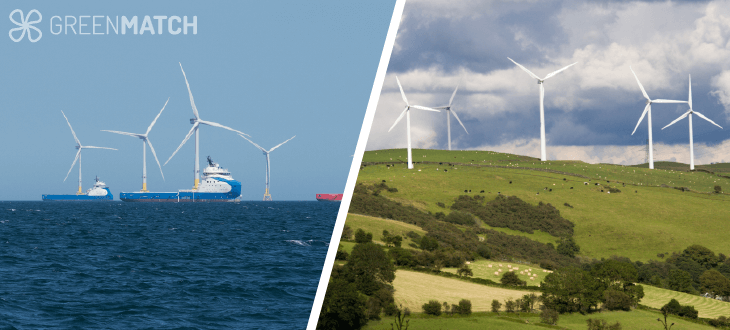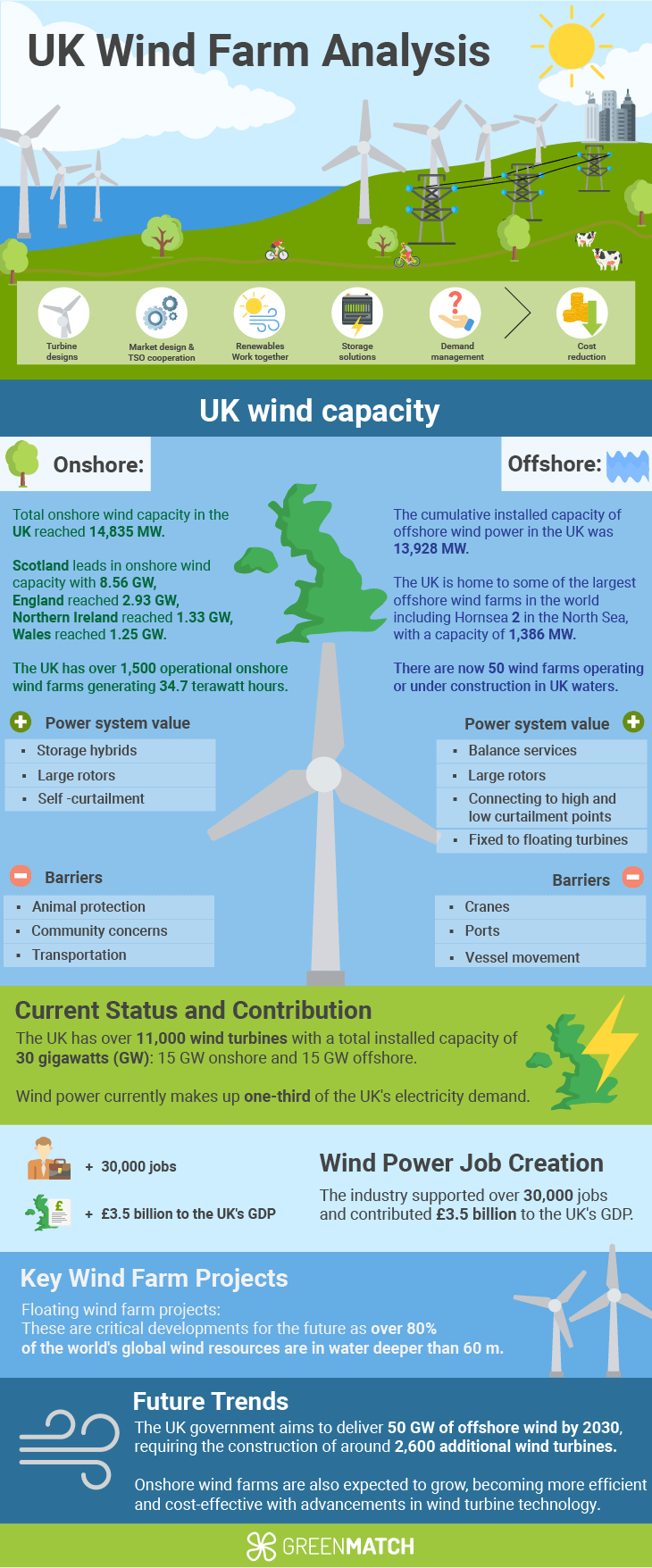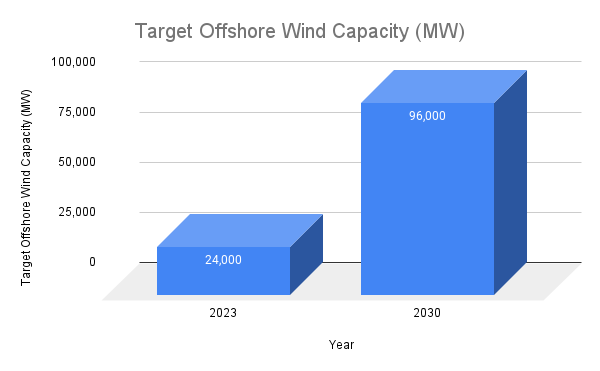https://www.facebook.com/ads/preferences/edit/
/nhttps://advertise.bingads.microsoft.com/en-us/resources/policies/personalized-ads
/nhttps://www.linkedin.com/psettings/advertising
/nhttp://www.youronlinechoices.com/uk/your-ad-choices for more information on common third party cookies used for targeted marketing.</p>\n","modalButton":"Save and close","overlayTitle":"We use cookies to give you the best browsing experience.","overlayText":"<p>We and our partners use cookies on our website to improve your browsing experience, personalize content and ads, provide social media features, and analyze our traffic. If you continue interacting we assume that you are happy to receive all cookies on this website. However, you can change your <span class=\"cookie-toggler\">cookie settings</span> at any time at the bottom of this page. Read more about our <a href=https://www.greenmatch.co.uk/"/cookie-policy/">cookie policy</a>.</p>\n","overlayButton":"Save and close"},"whyUse":{"title":"Why Use GreenMatch?"},"productGuide":{"back":"Back"},"page404":{"title":"Sorry, We Can't Find That Page","topText":"<div class=\"text shadow-container col-12 col-lg-10 col-xl-8 mb-4 p-3\">\n<p>…something went wrong or you might have followed an old link to a page that doesn’t exist anymore.</p>\n<p class=\"mt-3\">Were you looking for any of these by any chance?</p>\n<ul class=\"links\">\n<li><a href=https://www.greenmatch.co.uk/"https://www.greenmatch.co.uk/solar-energy/solar-panels/">Solar Panels</a></li>\n<li><a href=https://www.greenmatch.co.uk/"https://www.greenmatch.co.uk/heat-pumps/">Heat Pumps</a></li>\n<li><a href=https://www.greenmatch.co.uk/"https://www.greenmatch.co.uk/boilers/">Boilers/n
positioned wind power</a> as a crucial component in the UK’s transition to a greener, more sustainable future.</p>\n\n\n\n<p>In the <strong>first quarter of 2023, wind power became the UK’s largest source of electricity, providing 32.4% of the country’s electricity</strong>, surpassing natural gas, <strong>which accounted for 31.7% of the electricity fuel mix.</strong> This milestone underscores the increasingly important role that renewables, particularly <a href=https://www.greenmatch.co.uk/"https://www.greenmatch.co.uk/green-energy/wind/">wind power</a>, are set to play in the UK’s energy landscape.</p>\n\n\n\n<p>As of 2023, the UK boasts one of the world’s largest markets for wind energy, with wind power constituting a significant portion of the country’s energy mix. This article explores the intricacies of this dynamic sector, analysing how wind farms have grown, adapted, and integrated into the national energy policy.</p>\n\n\n\n<figure class=\"wp-block-image size-full No border\"><img loading=\"lazy\" width=\"730\" height=\"330\" src=https://www.greenmatch.co.uk/"https://cdn.greenmatch.co.uk/cdn-cgi/image/format=auto/2/2024/01/Wind-farm-UK-2.png/" alt=\"UK Wind farm\" class=\"wp-image-95903\" srcset=\"https://cdn.greenmatch.co.uk/cdn-cgi/image/format=auto/2/2024/01/Wind-farm-UK-2.png 730w, https://cdn.greenmatch.co.uk/cdn-cgi/image/format=auto/2/2024/01/Wind-farm-UK-2-300x136.png 300w\" sizes=\"(max-width: 730px) 100vw, 730px\" /></figure>\n\n\n\n<h2>The Evolution of Wind Farm in the UK</h2>\n\n\n\n<p>The UK’s journey with wind power began in the 1990s, but it was in the 2000s that the sector grew significantly. From 2000 to 2020, the UK’s wind power capacity grew from just over <strong>400 MW to nearly 24,000 MW, marking an impressive 60-fold increase.</strong></p>\n\n\n\n<p>Technological advancements, government policies, and increasing awareness of the need for sustainable energy sources have driven this growth.</p>\n\n\n\n<p>As of October 2023, the UK had offshore <strong>wind farms comprising 2,695 turbines</strong> with a <a href=https://www.greenmatch.co.uk/"https://en.wikipedia.org/wiki/List_of_offshore_wind_farms_in_the_United_Kingdom/">combined capacity of 14,703 megawatts</a>. This accounts for roughly 20 per cent of global offshore wind capacity.</p>\n\n\n\n<h3>The Current State of Wind Farms in the UK</h3>\n\n\n\n<p>As of 2023, the UK is home to over 2,000 wind farms, with a total installed capacity of over 30 GW, contributing to 20% of the UK’s total electricity generation. Offshore wind farms have been a significant driver of this growth, with the UK boasting the largest offshore wind capacity in the world.</p>\n\n\n\n<p>In 2022, wind energy contributed a <strong>record 26.8% to the UK’s energy mix, up from 21.8% in 2021.</strong> The growth continued into the first quarter of 2023, with <strong>wind power providing 32.4% of the UK’s electricity, surpassing natural gas for the first time</strong></p>\n\n\n\n<p>The UK’s wind power capacity is expected to continue to grow. The UK government has <strong>allocated over £380 million to boost the offshore wind sector and has invested an additional £160 million in offshore wind power hubs.</strong> These investments, the UK’s geographical advantages, and technological advancements position the country to remain a global leader in renewable energy for years.</p>\n\n\n\n<figure class=\"wp-block-table\"><table><thead><tr><th class=\"has-text-align-center\" data-align=\"center\">Type</th><th class=\"has-text-align-center\" data-align=\"center\"><strong>Number of Wind Farms</strong></th><th class=\"has-text-align-center\" data-align=\"center\"><strong>Total Installed Capacity (GW)</strong></th><th class=\"has-text-align-center\" data-align=\"center\">Percentage of UK’s Electricity Supply</th></tr></thead><tbody><tr><td class=\"has-text-align-center\" data-align=\"center\">Onshore</td><td class=\"has-text-align-center\" data-align=\"center\">1,500</td><td class=\"has-text-align-center\" data-align=\"center\">13.5</td><td class=\"has-text-align-center\" data-align=\"center\">15%</td></tr><tr><td class=\"has-text-align-center\" data-align=\"center\">Offshore</td><td class=\"has-text-align-center\" data-align=\"center\">500</td><td class=\"has-text-align-center\" data-align=\"center\">16.5</td><td class=\"has-text-align-center\" data-align=\"center\">15%</td></tr></tbody></table></figure>\n\n\n\n<p>The UK’s leadership in wind power is evident in its offshore wind capacity. In 2022, the Hornsea 2 offshore wind farm became fully operational, capable of powering around 1.4 million homes. The UK’s <strong>combined onshore and offshore wind capacity reached 25.5 gigawatts</strong>, enough to power two-thirds of UK homes.</p>\n\n\n\n<p>The UK is home to the world’s largest offshore wind farm, located off <a href=https://www.greenmatch.co.uk/"https://www.ons.gov.uk/economy/environmentalaccounts/articles/windenergyintheuk/june2021/">the coast of Yorkshire</a>. The country also has numerous successful wind energy projects, such as the Hornsea One offshore wind farm, developed and run by Ørsted, a renewable energy company.</p>\n\n\n\n<p>Some additional details worth noting:</p>\n\n\n\n<ul><li>The UK’s wind farms generated more electricity than gas for the first time in the first quarter of 2023.</li><li>Major projects that came online in 2023 include the 1.1 GW Seagreen wind farm and the first phase of the 3.6 GW Dogger Bank array.</li><li>Windfarms generated a record 21.8 GW of electricity on a day in December 2023 due to Storm Pia.</li><li>The UK’s current installed wind generation capacity exceeds 28 GW, with more than 13 GW generated offshore.</li><li>Wind power accounted for 29.4% of the UK’s electricity generation mix 2023.</li><li>During strong winds, the UK’s wind power generation reached a record 21.6 GW on January 10, 2023.</li><li>The UK has installed more than 14 GW of onshore wind energy and has a pipeline of planned projects totalling 23 GW.</li><li>The UK is committed to increasing its installed capacity for offshore wind generation to 40 GW by 2030, increasing the overall wind capacity to over 50 GW.<a href=https://www.greenmatch.co.uk/"https://en.wikipedia.org/wiki/Wind_power_in_the_United_Kingdom/" target=\"_blank\" rel=\"noreferrer noopener\"></a></li></ul>\n\n\n\n<h3>The Environmental Impact of Wind Power</h3>\n\n\n\n<p>Wind power has been crucial in reducing the UK’s greenhouse gas emissions, contributing to a <strong>40% reduction in CO2 emissions from the power sector since 1990</strong>. However, there are also environmental challenges, such as potential impacts on wildlife and landscapes. The industry is actively working on mitigation strategies, including careful site selection and implementing shutdown-on-demand systems to protect birds.</p>\n\n\n\n<figure class=\"wp-block-image size-full no border\"><img loading=\"lazy\" width=\"730\" height=\"1756\" src=https://www.greenmatch.co.uk/"https://cdn.greenmatch.co.uk/cdn-cgi/image/format=auto/2/2024/01/wind-farm-UK-overview.png/" alt=\"UK wind farm anaylsis\" class=\"wp-image-95883\" srcset=\"https://cdn.greenmatch.co.uk/cdn-cgi/image/format=auto/2/2024/01/wind-farm-UK-overview.png 730w, https://cdn.greenmatch.co.uk/cdn-cgi/image/format=auto/2/2024/01/wind-farm-UK-overview-125x300.png 125w, https://cdn.greenmatch.co.uk/cdn-cgi/image/format=auto/2/2024/01/wind-farm-UK-overview-426x1024.png 426w, https://cdn.greenmatch.co.uk/cdn-cgi/image/format=auto/2/2024/01/wind-farm-UK-overview-639x1536.png 639w\" sizes=\"(max-width: 730px) 100vw, 730px\" /></figure>\n\n\n\n<h2>The UK’s Wind Power Infrastructure</h2>\n\n\n\n<p>The wind power infrastructure in the UK is a dynamic and evolving landscape. The UK is at the forefront of the renewable energy revolution, from the rolling hills hosting onshore wind turbines to the expansive offshore wind farms harnessing the power of the sea winds.</p>\n\n\n\n<p>As of October 2023, the UK boasts approximately 14GW of operational offshore wind capacity, with an additional 4GW under construction and contracts for a further 9GW awarded. The UK’s total installed wind capacity, onshore and offshore, <strong>is over 30GW, with wind power being the country’s largest renewable energy source</strong>.</p>\n\n\n\n<h3>Onshore Wind Farms</h3>\n\n\n\n<p>Onshore wind farms are a significant part of the UK’s renewable energy infrastructure. As of September 2013, there were 458 operational onshore wind farms in the UK, with a total capacity of 6565 MW. A further 1564 MW of capacity is under construction, and another 4.8 GW of schemes had planning consent.</p>\n\n\n\n<p>Over the years, the UK has capitalised on its geographic advantages, such as its long coastline and strong winds, to expand its wind power capacity.</p>\n\n\n\n<p>The distribution of onshore wind farms varies across the UK, with England having <strong>1,999 turbines with a total capacity of 2.93 GW, Northern Ireland with 1,302 turbines and a capacity of 1.33 GW, Scotland with 4,464 turbines and a capacity of 8.56 GW, and Wales with 998 turbines and a capacity of 1.25 GW.</strong></p>\n\n\n\n<p>One of the largest onshore wind farms in the UK is the Clyde Wind Farm, <a href=https://www.greenmatch.co.uk/"https://www.statista.com/statistics/896631/onshore-wind-farm-turbine-numbers-united-kingdom-uk//">which has the highest number</a> of wind turbines among all onshore wind farms in the country. The UK’s most significant operational onshore wind farm is the Whitelee Wind Farm in East Renfrewshire, Scotland. It has 140 turbines with a total capacity of 322 MW. Another notable onshore wind farm is the West Benhar Wind Farm in North Lanarkshire, which annually provides 30.1 MW of low-carbon electricity.</p>\n\n\n\n<p>The Stornoway Wind Farm on the Isle of Lewis in the Outer Hebrides is a notable onshore wind farm developed by Lewis Wind Power, a joint venture between EDF Renewables. </p>\n\n\n\n<p>Some of the largest onshore wind farms in the UK include:</p>\n\n\n\n<ul><li>Griffin in Perth & Kinross, Scotland, with 68 turbines and a capacity of 156.4 MW</li><li>Pen y Cymoedd in Neath Port Talbot & Rhondda Cynon Taf, Wales, with 76 turbines and a capacity of 228 MW</li></ul>\n\n\n\n<h3>Offshore Wind Farms</h3>\n\n\n\n<p>The UK has also made significant strides in offshore wind power. As of the start of 2022, the total offshore wind power capacity installed in the UK was 11.3 GW. The UK has the largest offshore wind farm in the world, Hornsea 1, located off the coast of Yorkshire. </p>\n\n\n\n<figure class=\"wp-block-image size-full bo border\"><img loading=\"lazy\" width=\"600\" height=\"371\" src=https://www.greenmatch.co.uk/"https://cdn.greenmatch.co.uk/cdn-cgi/image/format=auto/2/2024/01/Target-Offshore-Wind-Capacity-MW.png/" alt=\"Offshore wind capacity projection\" class=\"wp-image-95884\" srcset=\"https://cdn.greenmatch.co.uk/cdn-cgi/image/format=auto/2/2024/01/Target-Offshore-Wind-Capacity-MW.png 600w, https://cdn.greenmatch.co.uk/cdn-cgi/image/format=auto/2/2024/01/Target-Offshore-Wind-Capacity-MW-300x186.png 300w\" sizes=\"(max-width: 600px) 100vw, 600px\" /></figure>\n\n\n\n<p>As of 2023, the UK had around 12.7 GW of connected offshore wind energy across 44 wind farms, contributing about 13% to the UK electricity mix. </p>\n\n\n\n<p>The London Array, located off the Kent coast, is one of the world’s largest offshore wind farms. It includes 175 Siemens 3.6MW wind turbines spread across 100 square kilometres, each standing 147 meters tall. The wind farm has a maximum power of 630 MW, generating enough <strong>clean electricity to power around 500,000 British homes.</strong></p>\n\n\n\n<p>Hornsea 1, located in the North Sea, is another significant offshore wind farm in the UK. It comprises 174 wind turbines, each 190 meters tall, and covers an area of 407 square kilometres. The wind farm generates enough green energy to power over 1 million UK homes.</p>\n\n\n\n<p>Another significant offshore wind farm is Hornsea 2, which became fully operational in 2022. As the world’s largest installed wind farm, <strong>Hornsea 2 has a capacity of 1.3GW and comprises 165 wind turbines located 89km off the Yorkshire Coast.</strong> It provides low-cost, clean, and secure renewable energy to over 1.4 million UK homes.</p>\n\n\n\n<p>Other significant offshore wind farms include:</p>\n\n\n\n<ul><li>European Offshore Wind Deployment Centre in Scotland with a capacity of 93 MW</li><li>Galloper in England with a capacity of 353 MW</li><li>Greater Gabbard in England, with a capacity of 504 MW</li><li>Gunfleet Sands 1 & 2 in England with a capacity of 172 MW</li></ul>\n\n\n\n<h4><strong>Advantages of Offshore Wind Farms</strong></h4>\n\n\n\n<p>Offshore wind farms have several advantages over their onshore counterparts:</p>\n\n\n\n<ul><li>Stronger Winds: The wind speeds offshore are generally higher and more consistent, leading to higher energy generation efficiency.</li><li>Reduced Visual Impact: Offshore wind turbines are less visible from land, reducing visual impact concerns.</li><li>Larger Scale: Offshore wind farms can be built on a larger scale, contributing significantly to the UK’s renewable energy targets.</li></ul>\n\n\n\n<figure class=\"wp-block-table\"><table><thead><tr><th class=\"has-text-align-center\" data-align=\"center\"><strong>Wind Farm</strong></th><th class=\"has-text-align-center\" data-align=\"center\"><strong>Location</strong></th><th class=\"has-text-align-center\" data-align=\"center\"><strong>Type</strong></th><th class=\"has-text-align-center\" data-align=\"center\"><strong>Number of Turbines</strong></th><th class=\"has-text-align-center\" data-align=\"center\"><strong>Total Capacity (MW)</strong></th></tr></thead><tbody><tr><td class=\"has-text-align-center\" data-align=\"center\">Whitelee</td><td class=\"has-text-align-center\" data-align=\"center\">East Renfrewshire, Scotland</td><td class=\"has-text-align-center\" data-align=\"center\">Onshore</td><td class=\"has-text-align-center\" data-align=\"center\">140</td><td class=\"has-text-align-center\" data-align=\"center\">322</td></tr><tr><td class=\"has-text-align-center\" data-align=\"center\">Clyde Wind Farm</td><td class=\"has-text-align-center\" data-align=\"center\">South Lanarkshire, Scotland</td><td class=\"has-text-align-center\" data-align=\"center\">Onshore</td><td class=\"has-text-align-center\" data-align=\"center\">152</td><td class=\"has-text-align-center\" data-align=\"center\">350</td></tr><tr><td class=\"has-text-align-center\" data-align=\"center\">West Benhar</td><td class=\"has-text-align-center\" data-align=\"center\">North Lanarkshire, Scotland</td><td class=\"has-text-align-center\" data-align=\"center\">Onshore</td><td class=\"has-text-align-center\" data-align=\"center\">7</td><td class=\"has-text-align-center\" data-align=\"center\">30.1</td></tr><tr><td class=\"has-text-align-center\" data-align=\"center\">London Array</td><td class=\"has-text-align-center\" data-align=\"center\">Off the Kent coast</td><td class=\"has-text-align-center\" data-align=\"center\">Offshore</td><td class=\"has-text-align-center\" data-align=\"center\">175</td><td class=\"has-text-align-center\" data-align=\"center\">630</td></tr><tr><td class=\"has-text-align-center\" data-align=\"center\">Hornsea 1</td><td class=\"has-text-align-center\" data-align=\"center\">North Sea</td><td class=\"has-text-align-center\" data-align=\"center\">Offshore</td><td class=\"has-text-align-center\" data-align=\"center\">174</td><td class=\"has-text-align-center\" data-align=\"center\">Over 1,000</td></tr><tr><td class=\"has-text-align-center\" data-align=\"center\">Hornsea 2</td><td class=\"has-text-align-center\" data-align=\"center\">Off the Yorkshire Coast</td><td class=\"has-text-align-center\" data-align=\"center\">Offshore</td><td class=\"has-text-align-center\" data-align=\"center\">165</td><td class=\"has-text-align-center\" data-align=\"center\">1300</td></tr></tbody></table></figure>\n\n\n\n<p><strong>UK wind power capacity and generation</strong> <strong>as of 2023</strong></p>\n\n\n\n<figure class=\"wp-block-table\"><table><thead><tr><th class=\"has-text-align-center\" data-align=\"center\">Year</th><th class=\"has-text-align-center\" data-align=\"center\"><strong>Cumulative Capacity(MW)</strong></th><th class=\"has-text-align-center\" data-align=\"center\"><strong>Generation(GWh)</strong></th><th class=\"has-text-align-center\" data-align=\"center\"><strong>Capacity factor %(Onshore %, Offshore %)</strong></th><th class=\"has-text-align-center\" data-align=\"center\"><strong>Percentage of Total Electricity Use</strong></th></tr></thead><tbody><tr><td class=\"has-text-align-center\" data-align=\"center\"><strong>2008</strong></td><td class=\"has-text-align-center\" data-align=\"center\">2,974</td><td class=\"has-text-align-center\" data-align=\"center\">5,357</td><td class=\"has-text-align-center\" data-align=\"center\">20.6</td><td class=\"has-text-align-center\" data-align=\"center\">1.50</td></tr><tr><td class=\"has-text-align-center\" data-align=\"center\"><strong>2009</strong></td><td class=\"has-text-align-center\" data-align=\"center\">4,051</td><td class=\"has-text-align-center\" data-align=\"center\">6,904</td><td class=\"has-text-align-center\" data-align=\"center\">19.5</td><td class=\"has-text-align-center\" data-align=\"center\">2.01</td></tr><tr><td class=\"has-text-align-center\" data-align=\"center\"><strong>2010</strong></td><td class=\"has-text-align-center\" data-align=\"center\">5,204</td><td class=\"has-text-align-center\" data-align=\"center\">7,950</td><td class=\"has-text-align-center\" data-align=\"center\">17.4</td><td class=\"has-text-align-center\" data-align=\"center\">2.28</td></tr><tr><td class=\"has-text-align-center\" data-align=\"center\"><strong>2011</strong></td><td class=\"has-text-align-center\" data-align=\"center\">6,540</td><td class=\"has-text-align-center\" data-align=\"center\">12,675</td><td class=\"has-text-align-center\" data-align=\"center\">22.1</td><td class=\"has-text-align-center\" data-align=\"center\">3.81</td></tr><tr><td class=\"has-text-align-center\" data-align=\"center\"><strong>2012</strong></td><td class=\"has-text-align-center\" data-align=\"center\">8,871</td><td class=\"has-text-align-center\" data-align=\"center\">20,710</td><td class=\"has-text-align-center\" data-align=\"center\">26.7</td><td class=\"has-text-align-center\" data-align=\"center\">5.52</td></tr><tr><td class=\"has-text-align-center\" data-align=\"center\"><strong>2013</strong></td><td class=\"has-text-align-center\" data-align=\"center\">10,976</td><td class=\"has-text-align-center\" data-align=\"center\">24,500</td><td class=\"has-text-align-center\" data-align=\"center\">25.5</td><td class=\"has-text-align-center\" data-align=\"center\">7.39</td></tr><tr><td class=\"has-text-align-center\" data-align=\"center\"><strong>2014</strong></td><td class=\"has-text-align-center\" data-align=\"center\">12,440</td><td class=\"has-text-align-center\" data-align=\"center\">28,100</td><td class=\"has-text-align-center\" data-align=\"center\">25.8</td><td class=\"has-text-align-center\" data-align=\"center\">9.30</td></tr><tr><td class=\"has-text-align-center\" data-align=\"center\"><strong>2015</strong></td><td class=\"has-text-align-center\" data-align=\"center\">13,602</td><td class=\"has-text-align-center\" data-align=\"center\">40,442</td><td class=\"has-text-align-center\" data-align=\"center\">33.9</td><td class=\"has-text-align-center\" data-align=\"center\">11.0</td></tr><tr><td class=\"has-text-align-center\" data-align=\"center\"><strong>2016</strong></td><td class=\"has-text-align-center\" data-align=\"center\">16,218</td><td class=\"has-text-align-center\" data-align=\"center\">37,368</td><td class=\"has-text-align-center\" data-align=\"center\">26.3</td><td class=\"has-text-align-center\" data-align=\"center\">12</td></tr><tr><td class=\"has-text-align-center\" data-align=\"center\"><strong>2017</strong></td><td class=\"has-text-align-center\" data-align=\"center\">19,837</td><td class=\"has-text-align-center\" data-align=\"center\">49,607</td><td class=\"has-text-align-center\" data-align=\"center\">28.5</td><td class=\"has-text-align-center\" data-align=\"center\">17</td></tr><tr><td class=\"has-text-align-center\" data-align=\"center\"><strong>2018</strong></td><td class=\"has-text-align-center\" data-align=\"center\">21,700</td><td class=\"has-text-align-center\" data-align=\"center\">57,100</td><td class=\"has-text-align-center\" data-align=\"center\">30.0</td><td class=\"has-text-align-center\" data-align=\"center\">18</td></tr><tr><td class=\"has-text-align-center\" data-align=\"center\"><strong>2019</strong></td><td class=\"has-text-align-center\" data-align=\"center\">23,950</td><td class=\"has-text-align-center\" data-align=\"center\">64,134</td><td class=\"has-text-align-center\" data-align=\"center\">32%</td><td class=\"has-text-align-center\" data-align=\"center\">21</td></tr><tr><td class=\"has-text-align-center\" data-align=\"center\"><strong>2020</strong></td><td class=\"has-text-align-center\" data-align=\"center\">24,485</td><td class=\"has-text-align-center\" data-align=\"center\">75,369</td><td class=\"has-text-align-center\" data-align=\"center\">~35.5(28, 46)</td><td class=\"has-text-align-center\" data-align=\"center\">24</td></tr><tr><td class=\"has-text-align-center\" data-align=\"center\"><strong>2021</strong></td><td class=\"has-text-align-center\" data-align=\"center\">25,800</td><td class=\"has-text-align-center\" data-align=\"center\">64,460</td><td class=\"has-text-align-center\" data-align=\"center\">~29.3(23, 37)</td><td class=\"has-text-align-center\" data-align=\"center\">21</td></tr><tr><td class=\"has-text-align-center\" data-align=\"center\"><strong>2022</strong></td><td class=\"has-text-align-center\" data-align=\"center\">28,800</td><td class=\"has-text-align-center\" data-align=\"center\">80,300</td><td class=\"has-text-align-center\" data-align=\"center\">(27.3, 41.1)</td><td class=\"has-text-align-center\" data-align=\"center\">24.6</td></tr></tbody></table><figcaption>Data Source: <a href=https://www.greenmatch.co.uk/"https://www.renewableuk.com//">RenewableUK and <a href=https://www.greenmatch.co.uk/"https://www.gov.uk//" target=\"_blank\" rel=\"noreferrer noopener\">GOV.UK</a></figcaption></figure>\n\n\n\n<h2>Comparative Analysis of Wind Farm Locations in the UK</h2>\n\n\n\n<p>The comparative analysis of wind farm locations across Scotland, Wales, Northern Ireland, and England reveals a robust and diverse wind power sector in the UK. Each region contributes uniquely to the country’s renewable energy goals, leveraging its geographical strengths.</p>\n\n\n\n<figure class=\"wp-block-image\"><img alt=\"\" /></figure>\n\n\n\n<p>As of 2023, the UK had over 11,000 wind turbines with a total installed capacity of 30 gigawatts (GW), split evenly between onshore and offshore installations.</p>\n\n\n\n<h3>Wind Farms in Scotland</h3>\n\n\n\n<p>Scotland is home to many wind farms, both onshore and offshore. As of June 2022, Scotland had 8.7GW of installed onshore wind power, with a further 11.3GW in the pipeline. Some of the <strong>large wind farms in Scotland include the Black Law Wind Farm, Braes of Doune Wind Farm, Clyde Wind Farm, and Crystal Rig Wind Farm.</strong> The Viking Wind Farm in the Shetland Islands, despite its reduction in scope due to environmental concerns, is another notable project.</p>\n\n\n\n<p>Scotland’s wind farms generate an average of 27% of their annual maximum output. The load factor for offshore wind in Scotland is 44.3%.</p>\n\n\n\n<h3>Wind Farms in England</h3>\n\n\n\n<p>England also has a substantial number of wind farms. The country has the highest load factor for offshore wind at 45.8%. Some operational offshore wind farms in England include the Galloper, Greater Gabbard, and Gunfleet Sands.</p>\n\n\n\n<p>England’s onshore wind farms generate an<strong> average of 26% of their annual maximum output</strong>. The country has a total onshore wind capacity of 2.93GW.</p>\n\n\n\n<h3>Wind Farms in Wales</h3>\n\n\n\n<p>Wales has several wind energy projects, including the Alwen Forest, Clocaenog Forest, Brechfa Forest West, and Pen y Cymoedd. The country has the highest onshore wind load factor at 32.2%.</p>\n\n\n\n<figure class=\"wp-block-table\"><table><thead><tr><th class=\"has-text-align-center\" data-align=\"center\"><strong>Country</strong></th><th class=\"has-text-align-center\" data-align=\"center\"><strong>Onshore Wind Capacity (GW)</strong></th><th class=\"has-text-align-center\" data-align=\"center\"><strong>Onshore Wind Load Factor (%)</strong></th><th class=\"has-text-align-center\" data-align=\"center\"><strong>Offshore Wind Load Factor (%)</strong></th></tr></thead><tbody><tr><td class=\"has-text-align-center\" data-align=\"center\">Scotland</td><td class=\"has-text-align-center\" data-align=\"center\">8.7</td><td class=\"has-text-align-center\" data-align=\"center\">28.4</td><td class=\"has-text-align-center\" data-align=\"center\">44.3</td></tr><tr><td class=\"has-text-align-center\" data-align=\"center\">Wales</td><td class=\"has-text-align-center\" data-align=\"center\">1.25</td><td class=\"has-text-align-center\" data-align=\"center\">32.2</td><td class=\"has-text-align-center\" data-align=\"center\">37.6</td></tr><tr><td class=\"has-text-align-center\" data-align=\"center\">Northern Ireland</td><td class=\"has-text-align-center\" data-align=\"center\">1.33</td><td class=\"has-text-align-center\" data-align=\"center\">26.8</td><td class=\"has-text-align-center\" data-align=\"center\">–</td></tr><tr><td class=\"has-text-align-center\" data-align=\"center\">England</td><td class=\"has-text-align-center\" data-align=\"center\">2.93</td><td class=\"has-text-align-center\" data-align=\"center\">37.6</td><td class=\"has-text-align-center\" data-align=\"center\">45.8</td></tr></tbody></table></figure>\n\n\n\n<p>Wales’ onshore wind farms generate an average of 26% of their maximum output yearly, similar to England. The country has a total onshore wind capacity of 1.25 GW.</p>\n\n\n\n<h3><strong>Wind Load Factors</strong></h3>\n\n\n\n<p>The load factor of a wind farm is a measure of how much of the wind farm’s total capacity is used over some time. It is a <a href=https://www.greenmatch.co.uk/"https://assets.publishing.service.gov.uk/media/6512e36cb23dad0012e706a4/Regional_Renewables_2022.pdf/">key indicator</a> of a wind farm’s efficiency and economic viability. </p>\n\n\n\n<p>As of 2022, the cumulative installed capacity of offshore wind power in the UK reached a peak of <a href=https://www.greenmatch.co.uk/"https://www.statista.com/statistics/792374/cumulative-offshore-wind-capacity-united-kingdom//">13,928 megawatts (MW)</a>. The total offshore wind power capacity installed at the start of 2022 was 11.3 gigawatts (GW). </p>\n\n\n\n<p>In terms of distribution across the UK, Scotland leads with the highest total capacity for onshore wind farms at 8.56 GW, followed by England (2.93 GW), Northern Ireland (1.33 GW), and Wales (1.25 GW).</p>\n\n\n\n<h4><strong>Onshore Wind Load Factors</strong></h4>\n\n\n\n<p>Scotland has the highest onshore wind load factor at 28.4%, followed by Wales at 27.4%, Northern Ireland at 26.8%, and England at 25.6%.</p>\n\n\n\n<h4><strong>Offshore Wind Load Factors</strong></h4>\n\n\n\n<p>England has the highest offshore wind load factor at 40.1%, Wales at 33.6%, and Scotland at 32.9%.</p>\n\n\n\n<h2>The Economic Impact of Wind Farms</h2>\n\n\n\n<p>The wind power sector has also had a significant economic impact. The development of wind farms across the UK has led to substantial economic benefits, including job creation, investment opportunities, and contributions to the country’s gross domestic product (GDP).</p>\n\n\n\n<p>In 2022, the industry supported over 30,000 jobs and contributed £3.5 billion to the UK’s GDP. Moreover, the sector attracted £4.2 billion in investment, underscoring the confidence in the future of wind power in the UK.</p>\n\n\n\n<figure class=\"wp-block-table\"><table><thead><tr><th class=\"has-text-align-center\" data-align=\"center\"><strong>Economic Indicator</strong></th><th class=\"has-text-align-center\" data-align=\"center\"><strong>Value </strong></th></tr></thead><tbody><tr><td class=\"has-text-align-center\" data-align=\"center\">Jobs Supported</td><td class=\"has-text-align-center\" data-align=\"center\">30,000</td></tr><tr><td class=\"has-text-align-center\" data-align=\"center\">Contribution to GDP (£ billion)</td><td class=\"has-text-align-center\" data-align=\"center\">£3.5</td></tr><tr><td class=\"has-text-align-center\" data-align=\"center\">Investment (£ billion)</td><td class=\"has-text-align-center\" data-align=\"center\">£4.2</td></tr></tbody></table></figure>\n\n\n\n<p>The UK’s leadership in wind power is evident in its offshore wind capacity. As of October 2023, the UK had offshore wind farms comprising 2,695 turbines with a combined capacity of 14,703 megawatts. This accounts for roughly 20 per cent of global offshore wind capacity.</p>\n\n\n\n<p>Wind power has been crucial in reducing the UK’s greenhouse gas emissions, contributing to a 40% reduction in CO2 emissions from the power sector since 1990. </p>\n\n\n\n<p>The UK’s commitment to wind power is further demonstrated by its ambitious targets for the future. The government aims to quadruple offshore wind capacity by 2030 to power every UK home with offshore wind. The Climate Change Committee has recommended that onshore wind power aims for a capacity of 29 GW.</p>\n\n\n\n<p>However, there are also environmental challenges, such as potential impacts on bird populations and visual landscapes. The industry actively works on mitigation strategies, including careful site selection and innovative turbine designs.</p>\n\n\n\n<h3>Contribution of Wind Power to the UK’s Economy</h3>\n\n\n\n<p>In 2022, wind energy contributed 26.8% to the UK’s energy mix, up from 21.8% in 2021. This increase in wind energy generation has helped to drastically reduce the UK’s dependence on imported fossil fuels, saving the country an estimated £1 billion annually. Furthermore, the industry has significantly contributed to the UK economy, with industry revenue reaching an estimated £4.9 billion in 2023.</p>\n\n\n\n<p>The UK’s wind power industry has also created many jobs. According to a report by the UK’s <a href=https://www.greenmatch.co.uk/"https://www.owic.org.uk//">Offshore Wind Industry Council (OWIC)</a>, more than 32,000 people were employed in the UK offshore wind sector as of 2023, marking a 4% increase from the end of 2021. </p>\n\n\n\n<p>The report also projected that the sector would need to train and retain an average of 10,000 people annually to achieve the government’s target of 50 GW by 2030, which would require 104,401 direct and indirect positions.</p>\n\n\n\n<h3>Investment in the UK’s Wind Power Industry</h3>\n\n\n\n<p>Investment in wind power has been robust, with turnover from wind energy reaching nearly <a href=https://www.greenmatch.co.uk/"https://www.ons.gov.uk/economy/environmentalaccounts/articles/windenergyintheuk/june2021/">£6 billion in 2019</a>. The offshore wind supply chain alone has the potential to contribute £92 billion to the UK economy by 2040. This is underpinned by government policies and subsidies designed to stimulate the sector, such as the recent increase in subsidies for offshore wind developers by up to 66% and a £60 million boost for floating offshore wind projects.</p>\n\n\n\n<p>In December 2023, the UK secured an <a href=https://www.greenmatch.co.uk/"https://maritime-executive.com/article/uk-gets-14b-investment-for-world-s-largest-wind-farm-from-rwe-and-uae/">£11 billion investment agreement</a> to develop the world’s largest wind farm in a deal between Germany’s RWE and the United Arab Emirates’ state-owned renewables company Masdar.</p>\n\n\n\n<h3>UK Wind Farm Market Analysis</h3>\n\n\n\n<p>The UK wind energy market has seen significant growth over the past decade, with a 715% increase in electricity generation from wind power between 2009 and 2020. As of 2024, the electricity generation in the wind energy market is <a href=https://www.greenmatch.co.uk/"https://www.statista.com/outlook/io/energy/renewable-energy/wind-energy/united-kingdom/">projected to amount to 60.43 billion kWh.</a> The UK has a total installed wind capacity of approximately 28.5 GW, equally split between onshore (14.1 GW) and offshore (14.4 GW) farms. </p>\n\n\n\n<p>In 2022, wind power contributed <a href=https://www.greenmatch.co.uk/"https://www.mordorintelligence.com/industry-reports/united-kingdom-offshore-wind-energy-market/">26.8% of the UK’s electricity generation. The UK’s wind energy sector has attracted more than £45 billion in investment and created over 30,000 jobs. The turnover from wind energy was nearly £6 billion in 2019.</p>\n\n\n\n<p>The UK is home to the world’s largest offshore wind farm, the Hornsea 1, located off the coast of Yorkshire. The country also boasts the London Array, the largest wind farm in Europe, with a capacity of 630 MW.</p>\n\n\n\n<p>The UK wind energy market is expected to grow, with a compound annual growth rate (CAGR) of more than 6% forecasted for 2022-2027. This growth is driven by the UK’s commitment to renewable energy, efforts to combat climate change, and the continuous development of wind technologies.</p>\n\n\n\n<h2>Future Trends and Prospects of Wind Farms in the UK</h2>\n\n\n\n<p>The UK’s offshore wind load factors are projected to rise to 57% by 2030 and 63% by 2040. This increase is expected due to the deployment of larger turbines that can access higher winds due to their increased height, leading to increased efficiency. </p>\n\n\n\n<h3>Government Targets</h3>\n\n\n\n<p>The UK government has set a target to deliver 50 GW of offshore wind by 2030, a significant increase from the current capacity. The UK must build another 2,600 wind turbines costing £48 billion by 2030 to meet this target. </p>\n\n\n\n<p>The government has also lifted restrictions on building new onshore wind farms in 2023, which is expected to accelerate the growth of onshore wind power. </p>\n\n\n\n<p>In response to industry concerns about low auction prices, the government has announced plans to increase the price offered in its next renewables <a href=https://www.greenmatch.co.uk/"https://www.reuters.com/world/uk/uk-seeks-10-gw-offshore-wind-projects-2024-auction-vattenfall-says-2023-11-28//">auction by 66%</a>. This move is expected to breathe life back into the UK’s aim of achieving 50GW of offshore wind in UK waters by 2030. </p>\n\n\n\n<h3>Technological Advancements</h3>\n\n\n\n<p>The wind power industry in the UK is poised for significant growth, driven by technological advancements. Larger and more efficient wind turbines are being developed to generate more power and operate in a broader range of wind conditions.</p>\n\n\n\n<p>Digital technologies like predictive analytics and machine learning are also increasing. These technologies can help to optimise the operation of wind farms, reduce maintenance costs, and increase the reliability of power generation.</p>\n\n\n\n<p>Furthermore, developing floating wind turbines could open up new areas for offshore wind farms, particularly in deeper waters where fixed-bottom turbines are not feasible.</p>\n\n\n\n<h3>Wind Power Contribution to the UK’s Energy Mix</h3>\n\n\n\n<p>Wind power has become the UK’s leading power source, producing more electricity than gas and imports. In the first quarter of 2023, <a href=https://www.greenmatch.co.uk/"https://www.greenmatch.co.uk/green-energy/wind/">wind power contributed to a third of the country’s electricity</a>. Wind turbines, such as Storm Pia, have generated more than half of the UK’s electricity during specific periods. </p>\n\n\n\n<h3>Challenges and Opportunities for the Wind Farm Industry</h3>\n\n\n\n<p>Despite the positive outlook, the wind farm industry in the UK faces several challenges. These include the intermittent nature of wind power, the need for significant investment in grid infrastructure, and environmental and visual impacts.</p>\n\n\n\n<p>There have also been instances where wind farm projects have been rejected due to concerns about their impact on the landscape and local communities. </p>\n\n\n\n<p>However, these challenges also present opportunities. The intermittency issue can be addressed by developing energy storage technologies, such as batteries and pumped hydro storage. Investment in grid infrastructure can facilitate the integration of more renewable energy into the grid while also creating jobs and stimulating economic growth.</p>\n\n\n\n<p>Environmental and visual impacts of wind farms can be mitigated through careful site selection, design, and operation. There is also a growing recognition of the need to balance these impacts with the urgent need to reduce carbon emissions and combat climate change.</p>\n\n\n\n<figure class=\"wp-block-table\"><table><thead><tr><th class=\"has-text-align-center\" data-align=\"center\"><strong>Technological Advancements</strong></th><th class=\"has-text-align-center\" data-align=\"center\"><strong>Potential Impact</strong></th></tr></thead><tbody><tr><td class=\"has-text-align-center\" data-align=\"center\">More giant, more efficient wind turbines</td><td class=\"has-text-align-center\" data-align=\"center\">Increased power generation</td></tr><tr><td class=\"has-text-align-center\" data-align=\"center\">Digital technologies (predictive analytics, machine learning)</td><td class=\"has-text-align-center\" data-align=\"center\">Optimised operation, reduced maintenance costs</td></tr><tr><td class=\"has-text-align-center\" data-align=\"center\">Floating wind turbines</td><td class=\"has-text-align-center\" data-align=\"center\">Access to new areas for offshore wind farms</td></tr><tr><td class=\"has-text-align-center\" data-align=\"center\">Advancements in energy storage technologies</td><td class=\"has-text-align-center\" data-align=\"center\">Addressing the intermittency issue</td></tr></tbody></table></figure>\n\n\n\n<h3>Future Projections</h3>\n\n\n\n<p>The UK’s wind power capacity will increase significantly in the coming years. By 2030, the offshore wind capacity is expected to reach 40 GW, making the UK the world’s leader in offshore wind power. This growth is expected to be driven by the government’s commitment to achieving net-zero carbon emissions by 2050.</p>\n\n\n\n<p>The UK government has committed to supporting the offshore wind industry by increasing the administrative strike price (ASP) for fixed-bottom offshore wind by 66% from £44/MWh in AR5 to £73/MWh in AR6. This move is expected to breathe life back into the government’s aim of achieving 50GW of offshore wind.</p>\n\n\n\n<p>In conclusion, the future of the wind farm industry in the UK looks promising, with significant growth expected in the coming years. Technological advancements, government support, and the increasing demand for renewable energy will drive the industry’s success.</p>\n","lastUpdated":"11 January 2024","topBanner":null,"pageHeader":{"type":"text","title":"Making the UK greener, one house at a time","subtitle":"","media_type":"mentionedIn","background_image":false},"breadcrumbs":[{"name":"GreenMatch","url":"https://www.greenmatch.co.uk/"},{"name":"Green Energy","url":"https://www.greenmatch.co.uk/green-energy"},{"name":"Wind Farms in the UK: The Growth and Impact","url":null}],"authors":[{"id":71044,"url":"https://www.greenmatch.co.uk/authors/inemesit-ukpanah","image":"https://cdn.greenmatch.co.uk/cdn-cgi/image/format=auto/2/2023/06/Inemesit.jpg","name":"Inemesit Ukpanah","bio":"<p>Inemesit is a seasoned content writer with 9 years of experience in B2B and B2C. Her expertise in sustainability and green technologies guides readers towards eco-friendly choices, significantly contributing to the field of renewable energy and environmental sustainability.</p>\n","shortenedbio":"<p>Inemesit is a seasoned content writer with 9 years of experience in B2B and B2C. Her expertise in sustainability and green technologies guides readers towards eco-friendly choices, significantly contributing to the field of renewable energy and environmental sustainability.</p>\n","jobTitle":"Writer","email":"i.ukpanah@leads.io","linkedIn":"https://www.linkedin.com/in/inemesit-ukpanah-7b836127/","type":"contributor"}],"relatedArticles":[],"subPages":[],"topPages":[],"hideMoreOnThisTopic":false,"hideItsThatEasy":false,"hideBecomeAPartner":false,"hideContentHeader":false,"guideLinks":[]},"url":"/green-energy/wind-farm","version":"ac2a83a8524e6253e8813eee7189a636"}">![]()
![]()
![]()
![]()
![]()





 We strive to connect our customers with the right product and supplier. Would you like to be part of GreenMatch?
We strive to connect our customers with the right product and supplier. Would you like to be part of GreenMatch?